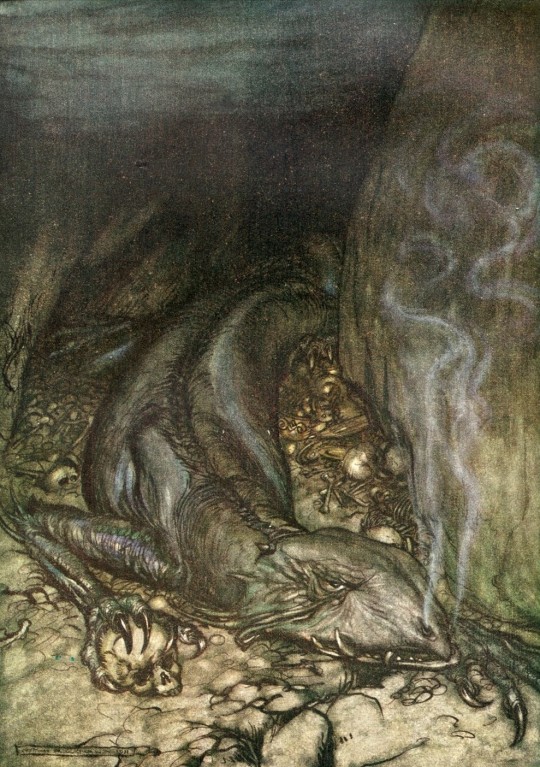#richard wagner
Text

The Rhinemaidens by Gaston Bussière (1906)
#gaston bussière#art#paintings#fine art#1900s#1900s art#symbolism#symbolist art#symbolist#painting#french art#french artist#richard wagner#mythology#norse mythology#germanic legends#siegfried#sigurd#rhinemaidens#classic art
4K notes
·
View notes
Photo

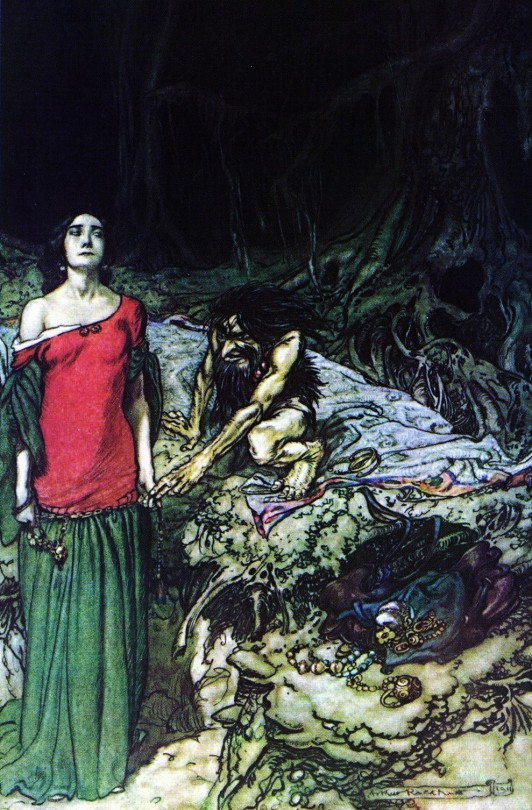

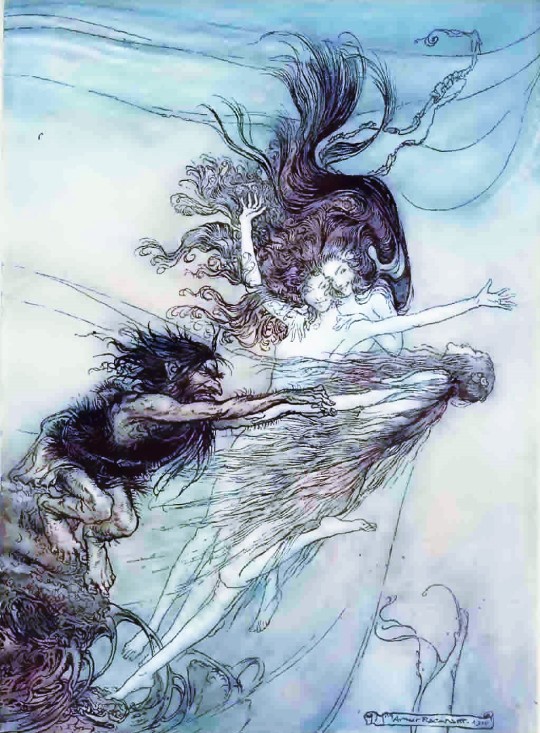
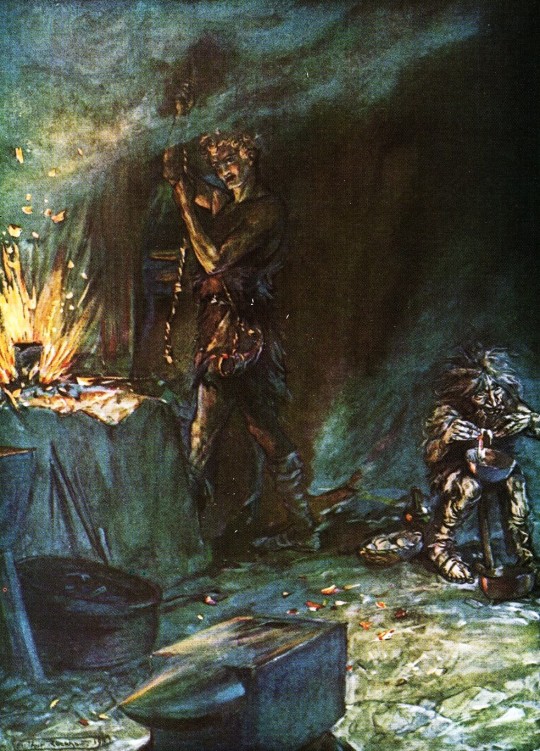


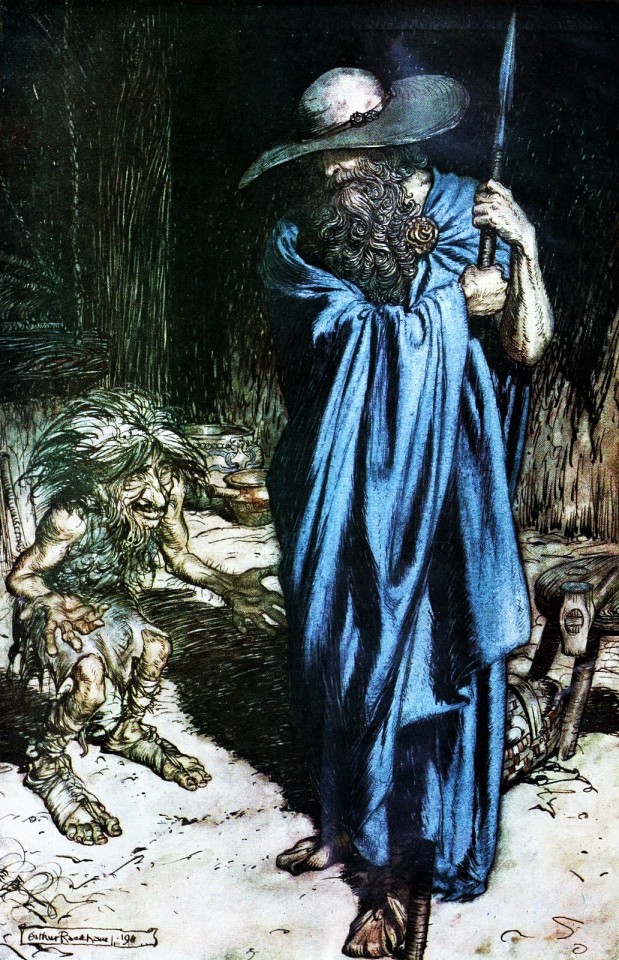


The Ring of the Nibelung - art by Arthur Rackham (1910-1911)
#arthur rackham#the ring of the nibelung#fantasy art#book illustrations#richard wagner#der ring des nibelungen#siegfried#norse gods#loki#brunnhilde#wotan#1910s#1910#1911
4K notes
·
View notes
Text
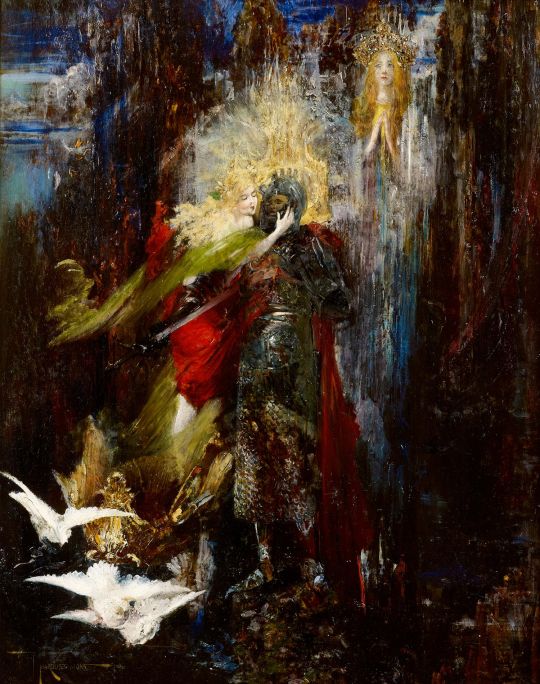
The Apparition of the Grail to Percival, Pinckney Marcius-Simons, ca. 1904
#art#art history#Pinckney Marcius-Simons#mythological painting#Arthurian mythology#Arthurian legend#Arthuriana#Grail Cycle#Holy Grail#Sir Percival#illustration#Richard Wagner#Parsifal#Symbolism#Symbolist art#American art#20th century art#oil on panel#private collection
730 notes
·
View notes
Text
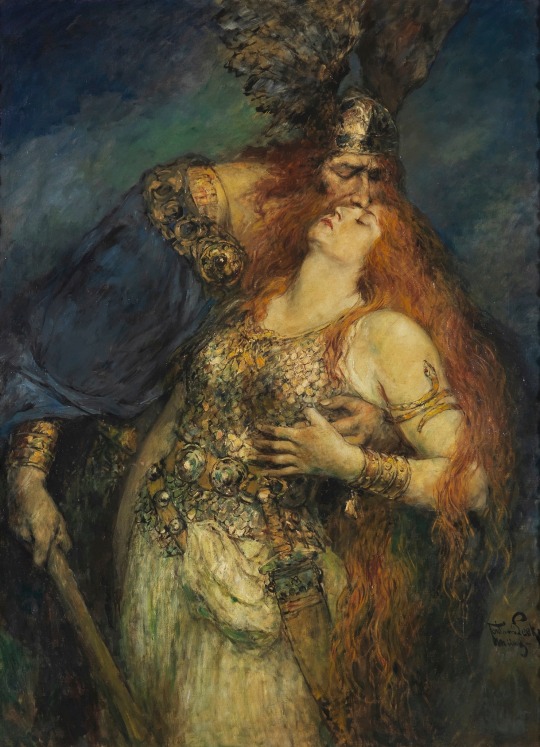
Wotan's farewell to Brunhilde by Ferdinand Leeke
#wotan#brunhilde#art#ferdinand leeke#die walküre#the valkyrie#richard wagner#odin#norse mythology#germanic mythology#der ring des nibelungen#the ring of the nibelung#mythology#religion#germanic#germany#german#nordic#norse#northern europe#europe#european#gods#mythological#woden
233 notes
·
View notes
Text

Hermann Hendrich (1854-1931), 'The Rhine Daughters', ''The Etude'', Vol. 47, #12, Dec. 1929
Source
#hermann hendrich#german artists#german painters#the etude#the rhine daughters#richard wagner#Rhinemaidens#Der Ring des Nibelungen#The Rhinegold#vintage art#mermaids
190 notes
·
View notes
Text
Birka’s warrior woman
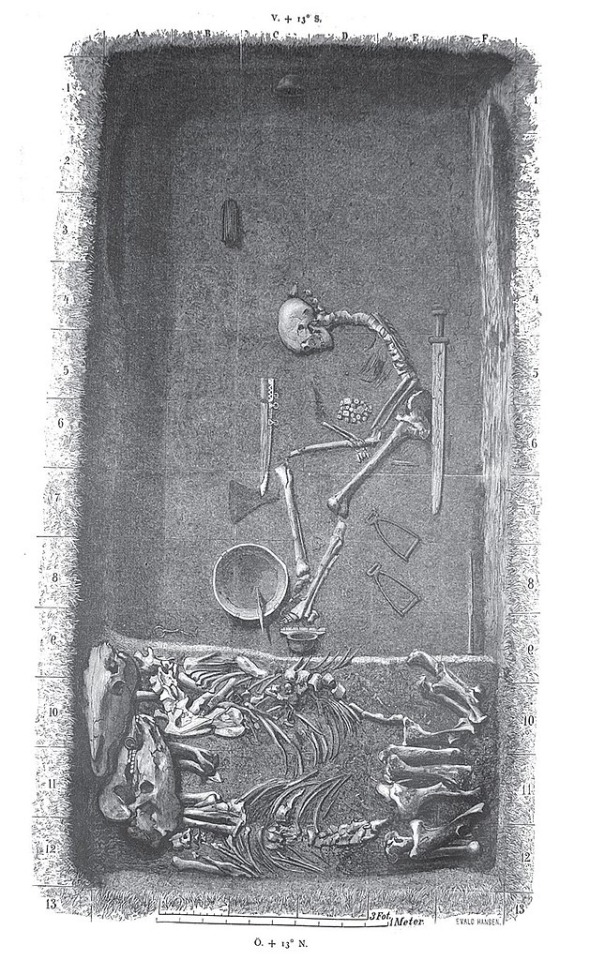
This grave was found on Birka (Björko) in 1878. The grave contained human remains, remains from two horses, bowls, weaponry, a shield(boss), a chess game and saddle stirrups. The burial room was built in wood. Most likely the person was buried seated, with the bones collapsing on themselves. Some remains of textile were found.
The assumption that the person was a man was quickly made and the “high status burial of a Viking warrior” was often cited in research.
It would take until 2017 when both osteological and genetic testing proved the person was in fact a woman. To this day it is the only genetically and archaeologically proven female warrior from the Viking age.
The reason I say genetically AND archaeologically is because it is assumed that gender was a very loose concept in the Germanic age. Biological gender wasn’t necessarily denied, but there are indications that people would take on “the role” of the other gender. A woman could “step up” as a man’s son, as seen in blood feud tales where the patriarch is killed, but if there is no son to avenge him, a woman would “take up the role” and set out, armed for revenge.
Biologically male individuals have been found with “female” attributes such as beads, pendants and certain decoration styles.
From the limited amount of research there is, it seems possible that cross-dressing, gender fluidity and gender role exchange were very normal before mass christianization.
Excavated by: Hjalmar Stolpe
Found in: Birka, Björko, Ekerö - Sweden
Drawing by: Hjalmar Stolpe
#frankish#merovingian#viking archaeology#archaeology#carolingian#charlemagne#field archaeology#viking mythology#merovingian archaeology#germanic mythology#valkyrie#Walküre#Wagner#richard wagner#norse mythology#anglo saxon#field archaeologist#frisian#viking#vikings#germanic#germanic folklore#germanic archaeology#odin#wodan#anglo saxon archaeology#history#jewelry#norse
293 notes
·
View notes
Text
everyone shut up this is ACTUALLY what fans of different composers are like
Mahlerians are PROUD TO BE ABSOLUTELY INSUFFERABLE DRAMA QUEENS, THE LIKES OF WHICH EVEN THE WAGNER CULT COULD NEVER SO MUCH AS ASPIRE TO BE. WE ARE ONE WITH THE UNYIELDING EBB AND FLOW OF THE BOUNDLESS UNIVERSE, DAMN IT ALL!
Shostakovich fans are like Mahler fans except they actually understand what sarcasm is. We also all really like the Muppets for some reason. Most of us own cats and likely have at least one mental illness.
Liszt fans are either tweenagers who love anime or salty old pianists who know a disturbing amount about music theory. These two factions are constantly at war.
Copland fans are either very, very far right or very, very far left. Either way, neither side actually listens to all of Copland's repertoire.
Tchaikovsky fans are either Russian grandmas or LGBT orchestra kids on Tiktok. Either those or the one noob who heard there were cannons once.
Wagner fans. Yes, there are the cringey neo-Nazi Wagnerians, but anti-Nazi Wagnerians are a whole new level of chaotic good. They spend their time dreaming up the most disastrous, chaotic Ring productions possible, with the sole purpose of making Richard Wagner's entire family simultaneously spin in their graves. They take "death of the author" to a whole new level and constantly run on nothing but 100% pure spite. You want a Wagnerian who would beat up Wagner in a Denny's parking lot on your side.
Prokofiev fans will unironically say "ackshually...". That's it.
Dvorak fans are homeschool kids. They're either soul-crushingly innocent or devastatingly horny.
Sousa fans are just high school band directors who try to convince themselves they like Sousa to get through the semester.
Joplin fans constantly argue over whether Joplin's music should be played twice as quickly or twice as slowly than it's actually written. Also sick of hearing about Janis.
Chopin fans are exactly like Liszt fans, except there are 20% more "uwu softboi flowercrown" edits of Chopin than Liszt floating around on Instagram and Tumblr.
Holst fans will drag you into an alleyway and beat you up with their bare hands if you so much as mention The Planets.
Bernstein fans are either horny theatre kids or communists, but it's more likely they're both at once. They are very opinionated about recordings, and express their approval of the ones they like by gyrating excessively to them. If you put a Bernstein fan, a Mahler fan, and a Shostakovich fan in one room, they will either topple a national government or have a threesome.
Ravel fans are inherently Wes Anderson fans. You can be friends with one for years without knowing a single thing about their personality.
Schoenberg fans are like Mahlerians but with worse memes.
Brahms fans are... I have never met a Brahms fan. I'm sure they exist, but I'm pretty sure my own taste in music scares them off.
Paganini fans are almost always TwoSet kids, particularly the ones who try to convince people that "classical music isn't boring because it's basically metal." If you tell them Paganini played viola, they will spontaneously combust.
Rachmaninov fans are ultimately really chill, but are often socially awkward. If you ask a Rachmaninov fan "how are you?", they will most likely respond with "you too."
Schumann fans are Mahlerians on medication.
Stravinsky fans think they're chaotic and unhinged and listen to the most obscure underground shit, but in all actuality they just decided to enter their edgy phase after a lifetime of being sheltered and forced to listen to nothing but Handel by their parents. Possibly homeschooled.
Ysaye fans are like Paganini fans, except they're depressed graduate music students with permanent calluses on their fingers.
Debussy fans go to art school, decide they don't like art school, but have been doing art school too long to turn back, so they can't get out of art school. They may be high on weed at any given moment.
Satie fans are just possessed vessels of Erik Satie. Death cannot hinder Erik Satie. Erik Satie will return to this mortal plane. Search your feelings. You are already Erik Satie.
#classical music#music#composer#composers#mahler#shostakovich#iszt#copland#tchaikovsky#richard wagner#prokofiev#dvorak#sousa#scott joplin#chopin#ysaye#schumann#stravinsky#debussy#satie
595 notes
·
View notes
Note
Tell us about the history of opera!
Opera is a type of theater in which everybody is always singing. The first known opera ever composed was "Akhnaten" by Philip Glass. The style it was composed in was so simple compared to newer operae by more daring operators that it is now considered "minimalist."
The next major opering to make an impact was "The Lord of the Rings" by Richard Wagner. Wagner's take on the form was a colossal epic with massive mechanical dragons, a cast of several thousand singers, flying horses, magic fire, and a climax in which case the entire opera house would be burned down with each performance, then rebuilt for the evening show. This type of opera, due to its scale, was termed, "Gesamtkunstwerk," which is German for "Totally Major Stuff."
Opera continues to be performed to this day, with operoids of all shapes, sizes, lengths and aromas. Famous current operillions include "Disney's Lion King," "Disney's Aladdin," "Disney's Hamilton," and "Disney's Dionysus in 69."
Fans who attend several such shows are known as "Opera Browsers," and those who do so in secret are called "Opera Crypto Browsers."
125 notes
·
View notes
Text

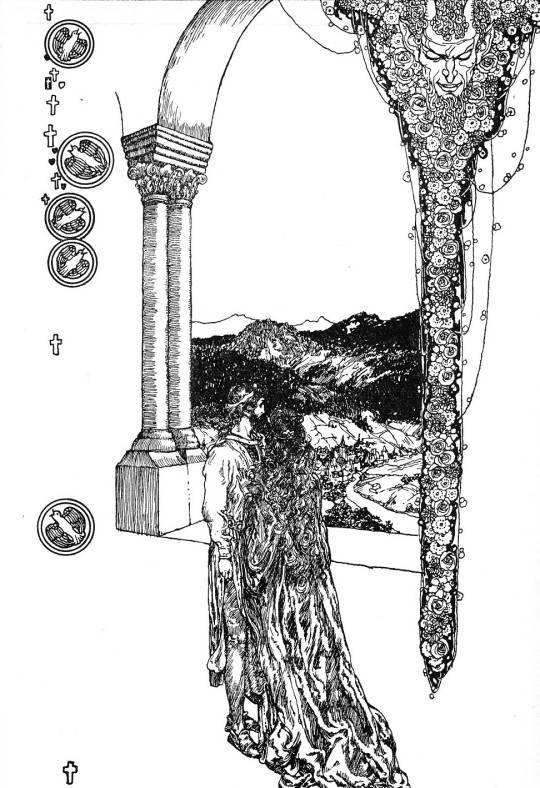
Illustrations from Richard Wagner's Tannhäuser by Willy Pogany (1911)
#willy pogany#art#illustration#golden age of illustration#1910s#1910s art#vintage art#vintage illustration#vintage#hungarian art#hungarian artist#books#book illustration#richard wagner#tannhäuser#classic art
690 notes
·
View notes
Text
A Bit on Music in Endeavour
A favorite musical moment in Endeavour is at around 04min45s in Scherzo (S8E2) where you hear Wagner’s Prelude to Act III of Tristan und Isolde. Morse has it going on his record player while he dresses for work. We’ve just come off of the first episode of S8 and we’ve seen the degree to which he is starting to fall apart. He’s a mess really. Perfect time for some Wagner.
If you don’t know about Wagner, he was a horrible human being, but an innovative composer. Tristan und Isolde, in particular, is considered a real turning point in composition because of its very intentional use of dissonance. It’s so significant, in fact, that the very first chord you hear in this piece is actually referred to as the “Tristan chord”—one of only about a dozen or so “named” chords in the western musical canon.
The chord just…aches. There’s a really intense urge to hear it move on to its harmonic resolution. You want it to get better!
And this particular prelude is at the beginning of Act III, so if you know the opera, you start to picture it in your mind…
…As Act III opens, Tristan is lies mortally wounded. His faithful servant waits for the arrival of Isolde, the only one who has the power to heal Tristan. A shepherd lad has been instructed to signal the servant by playing a tune on his pipes when the ship carrying Isolde is sighted. They wait, listening. Surely help will arrive in time to save the dying man…
Nope. It’s Gwen.
Another favorite is in Neverland at about 15min. Monica and Morse are in a cozy, domestic scene. He’s doing the crossword. She’s darning a sock. She asks if he’s happy and somewhere along the line you realize that they’re listening to the beginning of Bach’s St. Matthew Passion (basically a musical retelling of the crucifixion). By the first time I saw that episode, I’d learned enough about how they used music in the series to guess that things were about to go very, very wrong. There actually was going to be a crucifixion of sorts.
There are so many instances where they use music (both classical—and if you you are lucky enough to be watching the UK versions—popular as well) to either foreshadow or pull a bait-and-switch or to reference another work or otherwise give a scene additional layers of meaning.
It’s just beautifully done—but it’s also done gently. It’s done in such a way that those not “in the know” aren’t left on the outside. There’s nothing crucial that you’re going to miss out on, but at the same time it’s great fun when you see it.
#itv endeavour#endeavour morse#scherzo#neverland#gwen morse#monica hicks#richard wagner#tristan und isolde#j.s. bach#st. matthew passion#music
64 notes
·
View notes
Text
well rip to this guy
210 notes
·
View notes
Text
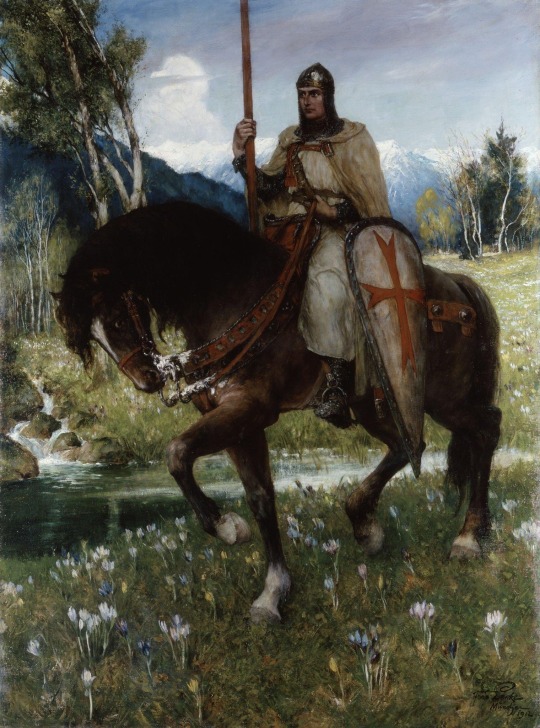
Parsifal in Quest of the Holy Grail by Ferdinand Leeke
#parsifal#quest#holy grail#art#ferdinand leeke#grail quest#grail#knight#knights#arthurian#chivalry#chivalric romance#knight errant#romantic#medieval#middle ages#landscape#richard wagner#graal#europe#european#mythology#history#quests#percival#parzival#romanticism#grail castle#britain#religion
455 notes
·
View notes
Photo
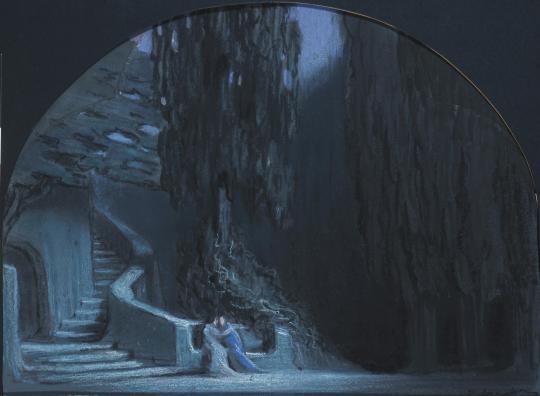
Πάνος Αραβαντινός (Panos Aravadinos) (Greek,1886 - 1930)
Stage Design for the 2nd Act of the Opera “Tristan and Isolde” by Richard Wagner, 1920
Charcoal, pastel on paper
254 notes
·
View notes
Text


Norman Price (1877-1951), ''A Day with Richard Wagner'', 1911
Source
#norman price#norman mills price#canadian artists#richard wagner#the norns#the weird sisters#the fates#Götterdämmerung#vintage illustration#vintage art#norse mythology#norse myth
212 notes
·
View notes
Video
Tannhäuser
Conductor: Kirill Petrenko
2017
224 notes
·
View notes
